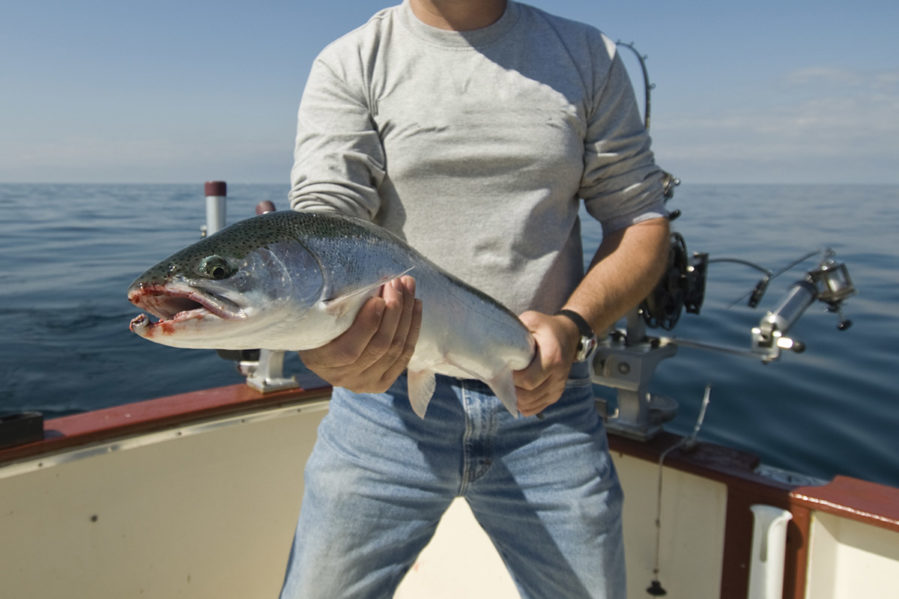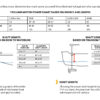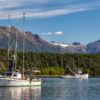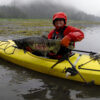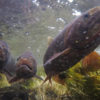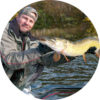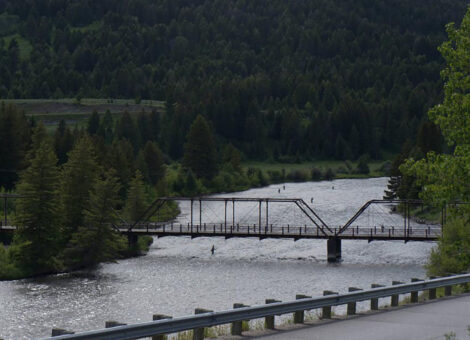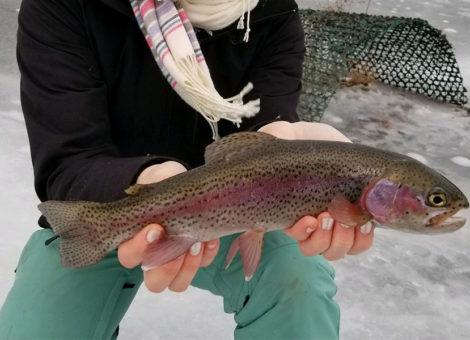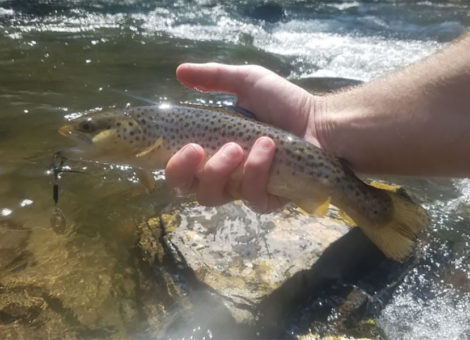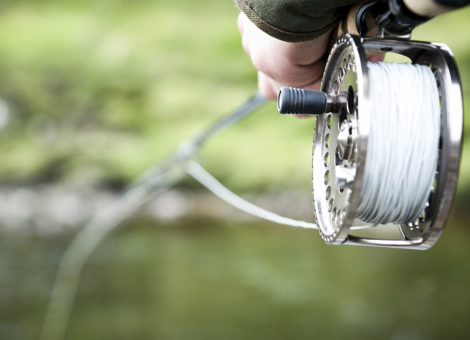Nothing generates envy within the angler circle more than a trophy catch. We’re talking about big monster fish—trouts that weigh 30 pounds or more!And what could be a prouder moment for a relatively new angler than a giant trout?
There’s much to be learned if you want that riveting campfire story of how you caught an enviable-sized trout. Let’s begin without further ado.
You might have heard of techniques and combinations such as lake trolls, spinners, and crankbaits, and such helping anglers catch trout. From my experience, nothing works better than trolling flies.
Trolling flies mimic natural prey for huge predatory fish like trout. Add some fiber, flash, and natural human hair, and you’ve got the perfect bait for trout. Others, like spooks, might help you catch stocked trout. But if you’re after wild trout, you need the fly, feathers, and fur.
The best part? You don’t need to invest in new gear. Keep it simple.
Required Gear
Most of the fishing gear that you’ve already invested in will work when you’re out baiting trout. Let’s quickly go over what works best when fishing for giant trout.
Rod and Reel
You can use any level-wind combo or spinning setup to troll with flies. The technique is easy, and success depends on your timing and presentation more than the reel and rod. Do remember, though. The rod should have the flex to handle a fish strike. Trouts have soft mouths, and a hook can do a lot of damage.
If you’ve tried fishing for Kokanee Salmon, a freshwater fish, you can use the same gear for trout. Pair it with a reel that has a line counter. They aren’t necessary. But they help anglers figure out the ideal depth and distance for trout.
Fishing Line
What are you comfortable using? A lead core? Perhaps it’s a long line? You could also be a fan of a downrigger. No matter which line you choose, you can tailor it depending on how you intend to troll the flies. Consider a braid or mono as the major line if you want a universal line.
When trolling for trout, a 10-pound test Power Pro will work, even when you’re using spoons, flies, or lake trolls. There is one drawback, though—lack of stretch. Stretch functions as a shock absorber whenever a fish attacks. You can mitigate this by using a soft action rod. You’ll find that mono functions better than braid as it has more stretch.
For this reason, try an 8-12 pound test when trolling flies. You should remain on the lighter side. You’ll be challenged to reach deeper water with thicker lines if you don’t have a downrigger.
Leader
Once you’ve chosen your fishing line, you must choose a leader material. If you’re fishing in clear water or if large trout are avoiding the line, fluorocarbon is a good option. You need to beware of one caveat when using fluorocarbon leader to catch flies. Limited flexibility causes it to deteriorate with excess bending action. At times, the trolling flies’ action can worsen the flaw. Another excellent option for leader material is monofilament. The smooth casting line is difficult to beat.
Flies
You need the right kind of flies that imitate what predatory fish consume. You can spot a good trolling fly based on how it moves. It must appear natural to tempt bigger trout.
Small trout prefer insects, small invertebrates, and larvae. Once trout grow past 16 inches, they prefer crustaceans and leaches. This is why trolling flies work well with trout. You don’t have to buy specific trolling flies to catch fish. Opt for streamer patterns such as Mickey Finn and Muddler Minnow instead. If you’re trolling for larger trout, use flies in the 4-inch range.
Dodgers
A flash catches a trout’s attention. If you’re angling for larger trout and not finding much success, try adding flash. Flash works best in bigger lakes as the water is deeper and darker. This reduces visibility but helps the flash stand out. Secure the flash to a dodger—a gear that swings back and forth. Fix the dodger to the major line while running a 12-18-inch leader to the fly.
When using this setup, skip the action disc. The dodger will give the fly considerable side-to-side movement. A downrigger suits this setup best. If you’re keen to experiment, include a trolling weight before the dodger.
Fly Trolling Tips, Techniques, and Setup
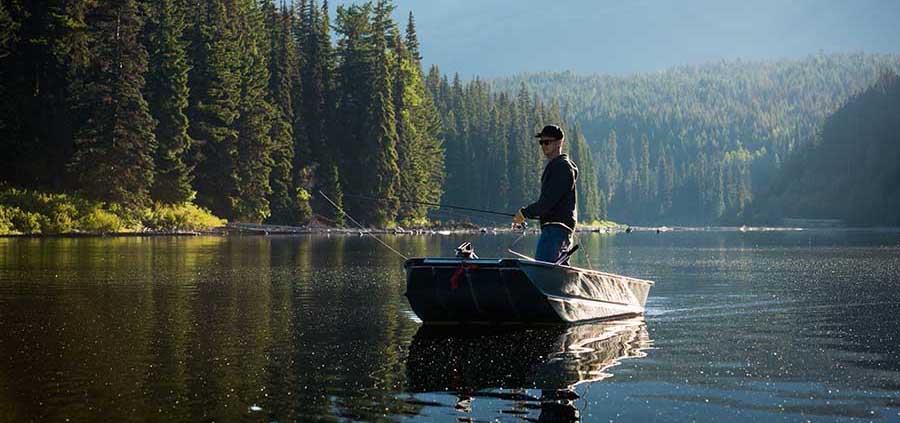
Anglers troll flies using different tactics. The method you select will rely on many factors. Start by determining what works best on the water body where you’re fishing. Include factors such as your equipment and boat too.
Side planners are some of the most efficient fly trolling techniques. They permit fly trolling to your boat’s side where hull shadow and boat noise don’t alarm the fish. Consider running the flies 130′-150’behind the side planers on the surface.
If you need to run them deeper when looking for active fish, slip shot 10′-40′ over the fly or clip on some weight. You can also lower the fish by using copper lines or lead core that run at the side planners’ rear. Side planners permit you to use several lines together. It’s best when you want to test various setups and colors.
Use Weights
To avoid scaring the trout, anglers prefer to let the line trail several feet behind the boat. This is a good tactic, especially if the trout are wary. Since weight wasn’t added, you’ll find that the line remains in the top 3-5 ft of water. If you need the line to sink, try an egg sinker or lead split shot weights. This will help your lure sink to about 10-20 ft and still trail a safe distance behind your boat. Some anglers favor lead core line when using a long line to get the fly into 30-40 ft of water.
Action Discs
If you want your lures to mimic real critter behavior, try adding an action disc. It works by adding vibrations and action. That makes lures appear like actual bait and draws the attention of big trout. When using action discs, troll slower to offer the best presentation.
Downriggers
When using downriggers, place the fly 40-50ft behind your boat before you connect the line to the downrigger. If you face a hard time maintaining the fly at the appropriate depth, add some weight next to the fly.
Trolling Speed and Pattern
Trolling speed is important when fishing. The best speeds for fly trolling are between 0.8 and 3.0 mph, depending on how you’re rigged up. If you are unsure, experiment.
Tip: Larger fish are aggressive and will attack huge baits trolled at high speeds. You can lure the same size fish with smaller presentations as well. Just troll more gradually for less hostile fish that prefer an easy meal. If you’re not getting much success with the aggressive fish, consider the less aggressive ones.
Change Directions
Avoid trolling in a straight line. Mimic natural movement by using “S” curves. This will help you add variation to the fly’s depth and speed. You’ll discover that fish preference can swing between an inside or outside rod.
Find the Best Fishing Spots
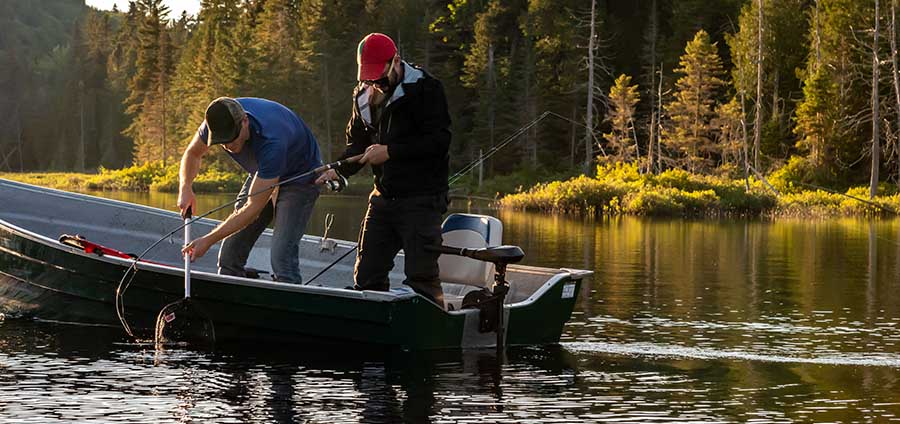
Consider fly trolling in spots that are natural hunting grounds for huge trout. Direct your path along structural edges and depth changes. Focus on inside turns located along shores where natural prey gather.
Use Lake Trolls
If you want to draw the attention of a trout, a lake troll is your best chance. Spinning blades have a long chain that generates considerable flash and vibration. This strategy is excellent when the water has some color, or the skies are overcast. Late winter is a perfect time to fly troll.
You can use keel weights for fishing lake trolls before the flasher to go deeper. But you might need more weight as several spinning blades generate considerable resistance. You can begin with ½ ounce of lead and include more weight for catching trout in the late season in deeper water.
Join the lake troll to the major line (if necessary, place the weight first). Then use a 20-30 inch mono leader on the lake troll’s back end. Remember, flashers spin. So you’ll have to put on an action disc because they don’t function like dodgers. You’ll need to glide a bobber stop and the disc. Then, fasten the fly, and you’ll be ready to go.
Ensure trolling takes place quickly enough to get a constant blade rotation. 1.2 mph is a good speed. If the trolling is too slow, the blades will wobble instead of spin. If you troll too fast, you’ll lose vibration and experience trouble with line twists.
When to Troll Flies
You can use trolling flies anytime. But some of the biggest catches happen during fall and spring. This is when trout hang higher in shallow breaks. It’s also where you’ll find baitfish in plenty. The most aggressive feeding period is late evening and early morning. This is because trout prefer feeding during low-light hours. Understanding trout feeding and movement patterns will add to your chances of success. For instance, trout shift to deeper water in the summer. If you’re wondering whether flies will be effective in deeper waters, the answer is yes. But you’ll need dodgers or flashers to draw attention to your fly. Trout will still stay in shallow water late at night and early morning as the water is cool during these hours.


